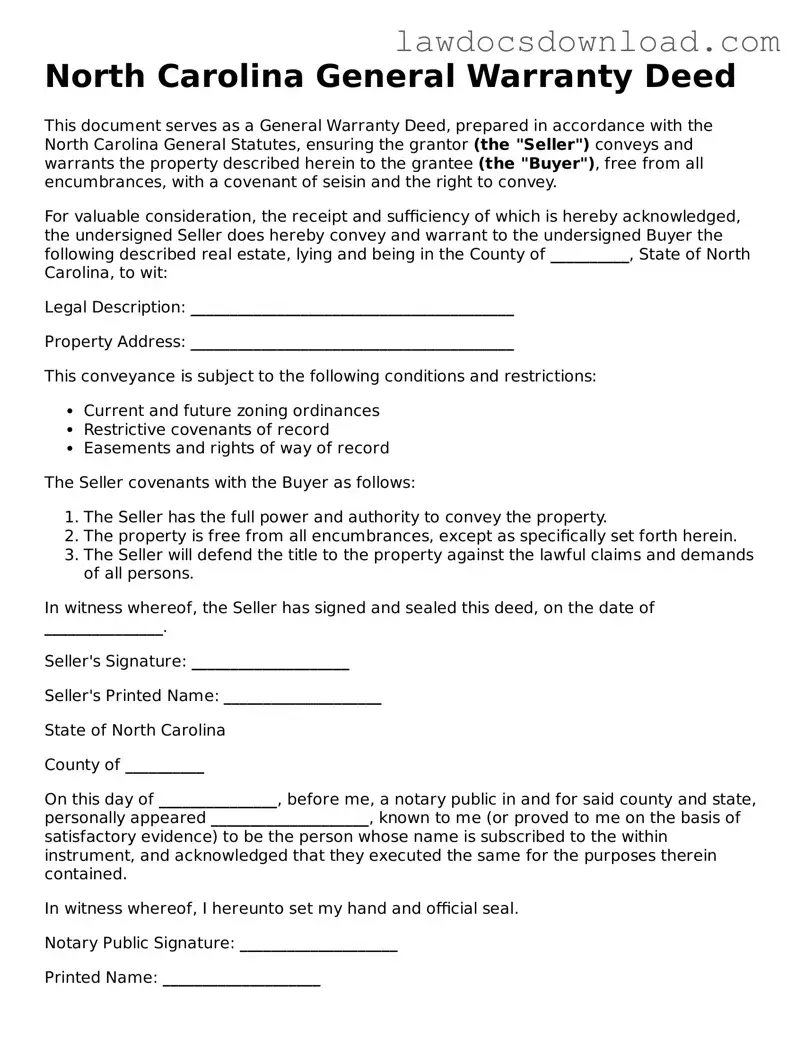North Carolina General Warranty Deed
This document serves as a General Warranty Deed, prepared in accordance with the North Carolina General Statutes, ensuring the grantor (the "Seller") conveys and warrants the property described herein to the grantee (the "Buyer"), free from all encumbrances, with a covenant of seisin and the right to convey.
For valuable consideration, the receipt and sufficiency of which is hereby acknowledged, the undersigned Seller does hereby convey and warrant to the undersigned Buyer the following described real estate, lying and being in the County of __________, State of North Carolina, to wit:
Legal Description: _________________________________________
Property Address: _________________________________________
This conveyance is subject to the following conditions and restrictions:
- Current and future zoning ordinances
- Restrictive covenants of record
- Easements and rights of way of record
The Seller covenants with the Buyer as follows:
- The Seller has the full power and authority to convey the property.
- The property is free from all encumbrances, except as specifically set forth herein.
- The Seller will defend the title to the property against the lawful claims and demands of all persons.
In witness whereof, the Seller has signed and sealed this deed, on the date of _______________.
Seller's Signature: ____________________
Seller's Printed Name: ____________________
State of North Carolina
County of __________
On this day of _______________, before me, a notary public in and for said county and state, personally appeared ____________________, known to me (or proved to me on the basis of satisfactory evidence) to be the person whose name is subscribed to the within instrument, and acknowledged that they executed the same for the purposes therein contained.
In witness whereof, I hereunto set my hand and official seal.
Notary Public Signature: ____________________
Printed Name: ____________________
My Commission Expires: ____________________
